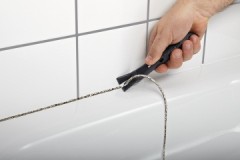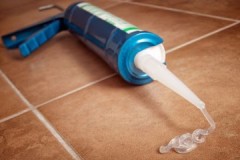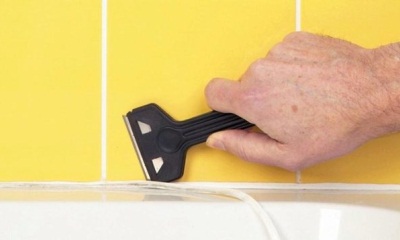 Even the highest quality silicone sealant in the bathroom deteriorates over time.
Even the highest quality silicone sealant in the bathroom deteriorates over time.
Its replacement is fraught with a number of difficulties. The main difficulty is removing the old material.
How to quickly remove old and dried silicone sealant from the bathroom at home and not damage it, read the article.
Content
Preparation for removal from the bath
If the sealant is fresh, then it will not be difficult to remove it., but to remove the hardened isolate, you will have to make an effort, since it adheres tightly to the surface. Do not apply new sealant to old material.
The choice of cleaning method is influenced by the type of sealant used to seal the bathroom. There are 2 types of silicone sealants:
-
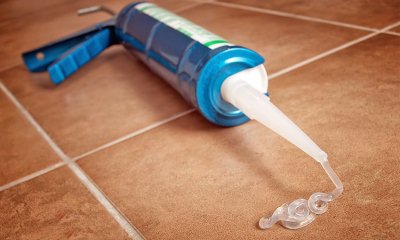 Acidic. They have a characteristic odor reminiscent of vinegar essence. It contains aggressive components, so when working with it, you need to thoroughly ventilate the room.
Acidic. They have a characteristic odor reminiscent of vinegar essence. It contains aggressive components, so when working with it, you need to thoroughly ventilate the room.This is especially true in the case when its removal will be carried out by a chemical method. Preference should be given to formulations containing acid.
- Neutral. They almost do not smell, do not contain caustic substances in the composition. Such sealants can be safely removed both chemically and mechanically. They can be removed with acetone and other organic solvents.
Acrylic sealants are easier to peel off than silicone sealants. This material can be pry off with a utility knife or blade. It also reacts well to solvents such as gasoline, acetone and vinegar.
Another type of sealant is siliconized... They are a combination of acrylic and silicone mixture. Such compositions are moisture resistant, harmless to humans. You can delete them in any way.
When starting to remove the material, it is recommended to seal the bath with masking tape. This will protect it from scratches in the event of an accidental hand break. You need to prepare tools and chemical compositions in advance.
How to clean it mechanically?
To complete the work, you will need the following tools:
- clerical or construction knife;
- blade;
- small spatula;
- tweezers;
- flat screwdriver;
- wooden scrapers;
- pumice.
Procedure:
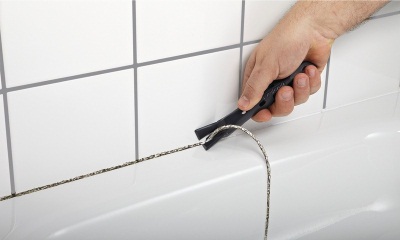 Using a sharp utility knife or blade, you need to make longitudinal and transverse cuts on the sealant where it adheres to the bathtub. They should be long.
Using a sharp utility knife or blade, you need to make longitudinal and transverse cuts on the sealant where it adheres to the bathtub. They should be long.- The incised edges are picked up with tweezers and pulled towards you. It is important not to overdo it. With the right approach, the silicone will come off in thin long stripes.
- Residues and torn pieces of silicone are removed with a wooden scraper or spatula.
- If a part of the material has got into narrow joints, it is pulled out from there with tweezers or forceps.
Difficulties do not arise if the silicone layer is dense. It is more difficult to cope with a thin layer of sealant. For high-quality and safe cleaning, use fine-grained sandpaper, the hard side of a dishwashing sponge or pumice stone.
How to remove old and dried out means at hand?
You can remove silicone sealant from the surface of the bath with the help of improvised means. The most accessible and effective ones are:
- gasoline Kalosha, white spirit;
- vinegar;
- alcohol.
Rules for the use of gasoline or white spirit:
- Apply solvent to a rag or sponge.
- With its help, walk on the surface in need of processing.
- Leave to work for 10 minutes.
- Remove softened sealant with a scraper.
Vinegar is best used to remove acidic silicone sealants. How to use it:
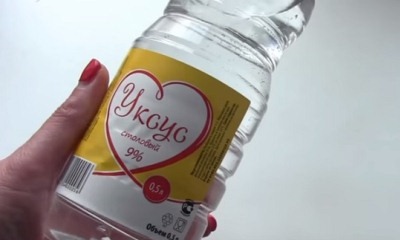 Put gloves on your hands.
Put gloves on your hands.- Moisten a sponge with the essence.
- With its help, process the desired area.
- Leave on for 5-10 minutes.
- Remove the softened mass with a spatula.
If necessary, the procedure is repeated again. You need to be prepared for the fact that during the work in the bath there will be a pungent acidic smell.
To cope with silicone sealant, you can use industrial alcohol or ethanol. Procedure:
- Moisten a clean rag in alcohol.
- Blot the silicone sealant with it.
- Leave to work for 15 minutes. If the alcohol wears off, it must be reapplied.
- Remove the compound with a wooden or metal spatula.
Using the listed means, you should try not to get on the surface of the bath itself. If a small amount of alcohol or solvent gets on the enamel or acrylic layer, it must be removed with clean water.
How to wipe off with specialized compounds?
There are chemicals commercially available to quickly and safely remove the sealant from the bathtub. Top 3 effective formulations:
- HG cleaner silicone sealant remover. It can be applied to various types of surfaces. The composition is intended for use in rooms with high humidity levels. The set includes a brush and a spatula for comfortable and safe work. One package is enough to process an area of 10-15 square meters. Price - 750 rubles.
- Silicone cleaner Tytan Professional... The paste is in a convenient cartridge, squeezed out of the spout. It can be used on various types of surfaces to clean fresh and cured sealants. Price - 480 rubles.
- Silicone cleaner TKK APURSIL... The tool can be used to remove sealant from bathtubs, shower stalls, hoods, tiles. It quickly and effectively dissolves not only silicone, but also polyurethane foam. Available as a spray. Price - 255 rubles.
How to remove fresh?
The silicone sealant cures within 20 minutes. If during this time you manage to remove it, then you can not resort to the use of potent agents.
 Removal instructions:
Removal instructions:
- pry off the silicone sealant with a wooden spatula and clean it off the surface;
- remove the mixture clogged in the cracks with a screwdriver;
- if the sealant begins to harden, it is treated with vinegar, and the softened stains are wiped off with a paper towel.
Small fresh stains can be easily removed by a hairdryer. It is turned on at low power, a warm stream of air is sent to the sealant. After a minute, it will soften and easily peel off the surface.
Features of cleaning different types of baths
Silicone Removal Tips with acrylic, enamel, cast iron and steel bath:
- When working with acrylic baths, do not use abrasive compounds, metal scrapers, knives, blades. The choice should be stopped on wooden trowels. Acrylic does not tolerate contact with acetone, alcohol, benzene and gasoline.
- The sealant can be removed from cast-iron and steel baths with chemicals and rough tools. However, it is necessary to control the force of pressure exerted on the surface.
- Enamel bathtubs should be handled with care, without physical effort. Do not allow the tool to fall into the bath, so that chips do not form on it.
He will tell you about the removal of sealant from the surface of an acrylic bath this publication.
Nuances of cleaning from tiles
The sealant can be removed from the tiles with the same compounds as with the bathroom.... Preference should be given to chemicals that do not contain aggressive components. Gasoline, alcohol and vinegar do this task well.
The use of metal tools is not recommended. They can cause chips and scratches on the surface of the tile.
For more information on how to remove silicone sealant from tiles, see this articles.
Helpful information
Tips for Removing Bath Sealant:
 Before proceeding with the removal of the sealant using chemicals, you need to test them in an inconspicuous area. If the coating does not change its properties, you can start cleaning.
Before proceeding with the removal of the sealant using chemicals, you need to test them in an inconspicuous area. If the coating does not change its properties, you can start cleaning.- When working with chemistry, you should not forget about your own safety measures. Hands should be protected with gloves. If aerosol cans are used, wear construction goggles over the eyes and a respirator over the respiratory system.
- Immediately after removing the sealant, rinse the treated surface with clean water. If the remover remains on an enamel or acrylic bath for a long time, it will lead to corrosion.
Conclusion
It is not difficult to remove silicone sealant from the bathtub if you choose the right product. It can be both professional cleaners and improvised compositions. The best result is achieved with a combination of mechanical and chemical methods.
